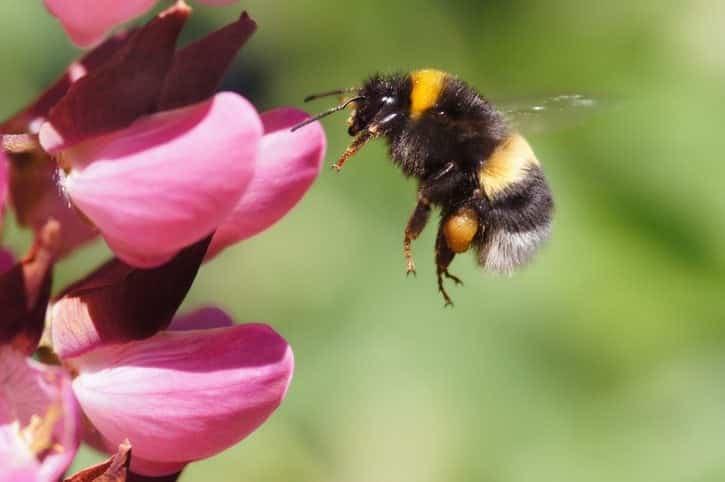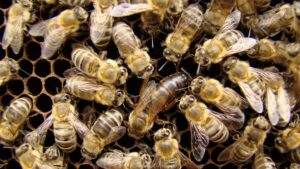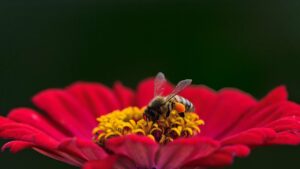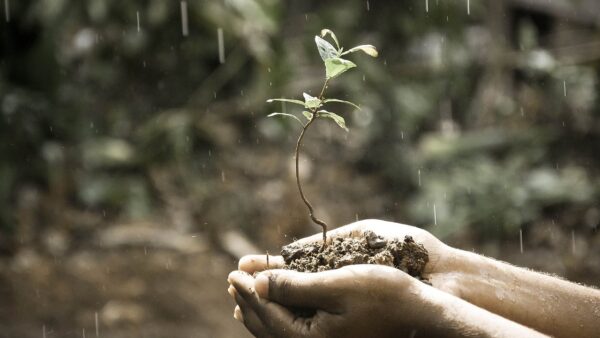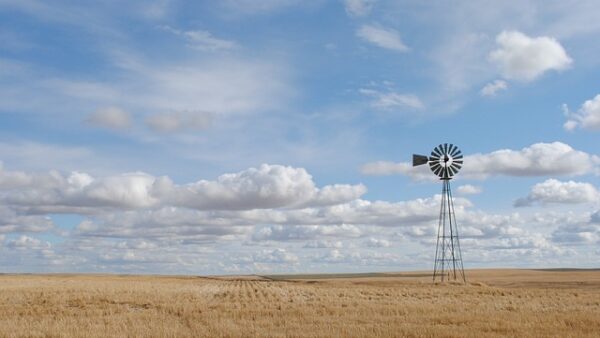Did you know that there are nearly 20,000 known species of bees on this planet? Many of these species are either not named or have not been well studied and some bee species might not even have been discovered yet. Except for the highest altitudes, bees are found in every habitat on the planet that contains insect-pollinated flowering plants. And the greatest diversity of bee species is found in warm, arid or semiarid areas, especially in the American Southwest and Mexico.
While we are all familiar with the colony forming honeybee, in fact most species of bees are solitary bees and only a few species form colonies. Most wild bee species construct either single or complex nests in the ground. Other bees make or utilize crevices in rocks or plant stems, insect borings, and plant galls for their nesting sites. Of the many species, the Western honeybee (Apis mellifera) is the most important domesticated bee that is used in beekeeping globally. The Eastern honeybee (Apis ceranae) is kept in parts of Asia also.
Most of the beekeepers worldwide are amateurs with a few hives. Only a tiny minority keep bees commercially. Honeybees seek their food within a circumference of three to four km around their hive. In human terms, this would equal travelling about 2,500 km to obtain our food. A single bee can perform this pollination up to 1,000 times a day. Fancy that for a trip to the supermarket.
Bees are regarded as one of the most important pollinators of our plants worldwide. They carry out truly astounding feats: For example, they have to fly to about two million flowers to produce half a kilogram of honey. And this with a lifespan of only three to six weeks in the summertime! Honey bees are responsible for pollinating many of the important fruits, nuts and vegetables necessary for a healthy diet, and are an important contributor to the rich diversity of flowering plants we enjoy around our homes and gardens. The pollination performance of honeybees increases yields and quality in many agricultural cultures – and can be summarised in impressive figures: its worldwide agricultural value amounts to at least 150 billion Euros a year. But honeybees are not the only pollinators out there. Other species that contribute to pollination include various species of wild bees such as bumblebees, solitary bees, but also butterflies, wasps, beetles, birds and bats. Studies have shown that about one-third of the human food supply depends on insect pollination.
Unfortunately, the honeybee is under threat by a number of factors and actors. The EU Commission in a recent report, identified a large number of bee pathogens, including two species of mites, four species of fungi, nine species of bacteria and 12 species of viruses! And if that wasn’t enough, there is a beetle, a louse, a wasp and two species of butterflies out there to harm the honeybees. And these are just the biological pathogens. Then there are several abiotic stress factors, such as intensive agriculture, habitat fragmentation and loss, wrong use of crop protection products, poor bee nutrition leading to bee starvation and weak bee genetics.
Most experts seem to agree that the Western honeybee’s biggest enemy is called Varroa destructor. The mite is a huge threat to the health of the honeybees as it transmits dangerous diseases. The European Food Safety Authority (EFSA) is stating the following: “No single cause of declining bee numbers has been identified. However, several possible contributing factors have been suggested, acting in combination or separately. These include the effects of intensive agriculture and pesticide use, starvation and poor bee nutrition, viruses, attacks by pathogens and invasive species – such as the Varroa mite (Varroa destructor), the Asian hornet (Vespa velutina), and the small hive beetle Aethina tumida and environmental changes (e.g. habitat fragmentation and loss).”
Overseeing all this, it seems there is a key role for beekeepers. For one, good apiculture practices seem crucial, with a responsible use of medicines and a coordinated and effective control of the Varroa mite. In addition, I would suggest there is improved cooperation with authorities (veterinary, plant protection, environmental etc.); and other actors in the chain, such as crop producers, horticulturalists, landowners etc. Overall it seems vital for the honey bee that there is better awareness and more specific training on the above. All decisions need to be based on science and peer-reviewed data, combined with constant monitoring, and updating regulations where necessary.
But, at the end of the day, let’s not forget that the most essential staple food crops on the planet, like corn, wheat, rice, soybeans and sorghum, are wind-pollinated or self-pollinating and need no insect help at all. Other staple food crops, like bananas and plantains, require no pollination of any form, as they are sterile and propagated from cuttings. Other foods such as root vegetables and salad crops will produce a useful food crop without pollination, though they may not set seed. In addition, many hybrid food crops rely entirely on human pollination to produce hybrid seeds. Apart from that, many common non-hybrid crops, like potatoes or heirloom tomatoes, are self-pollinated.
Although it is very important to protect all species of pollinators from their various threats, it seems that the doom-laden statement that if the bee disappeared off the face of the earth, man would only have four years left to live, should be taken with a large grain of salt. Fun fact: although the quote is often credited to Einstein, thorough research has not revealed any link between the quote and the man.


